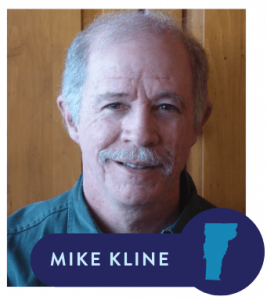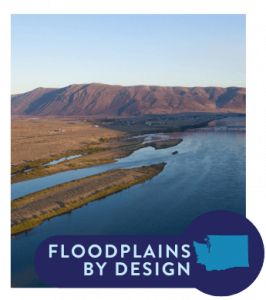Empowering Floodplain Management
As the aftermath of Hurricane Helene in the southeastern states reminds us, the need for effective floodplain management is more urgent than ever.
A healthy floodplain should serve as a sponge, absorbing floodwaters to support essential hydraulic and ecological functions. Historically, floodplain management has focused on controlling rivers within rigid channels. While this control is thought to keep people safe, it comes at a cost: degraded river health and decimated ecosystems.
From the arid landscapes of the Colorado River Basin to the coastal plains of the Southeast, communities across the nation are grappling with the increasing frequency and intensity of floods. It’s time to embrace a new paradigm for our rivers: one that works with nature, not against it. By building comprehensive and holistic floodplain management plans that emphasize nature-based solutions, we can build more resilient communities and healthier rivers.
How River Network Supports Integrated River Management (IRM)
Integrated River Management (IRM) has proved beneficial for both people and the environment, from improved water quality and flood resilience to more recreational opportunities.
River Network is collaborating with community-based organizations and governments in the Colorado River Basin to bring IRM into the planning conversation, including Colorado Water Conservation Board, The Nature Conservancy, American Rivers, the Yampa River Collaborative, and RiversEdge West. We are developing watershed plans that embrace the whole ecosystem, incorporate local values, and prioritize long-term resilience over short-term gains. But there is more work to be done.
Many organizations, in Colorado and beyond, struggle to find the capacity and funding to execute these broad and comprehensive plans. A lack of knowledge sharing, capacity to collaborate, and few incentives to innovate mean that we have fewer champions of IRM than our rivers need. We’re trying to fix that.
NEW Floodplain Management Resources in the State Policy Hub
The State Policy Hub has expanded to include a dedicated State Action for Healthy Rivers section. Here, you’ll find resources to support your floodplain management efforts, including state policies, resolutions, and plans related to aquatic litter, bolstering Clean Water Act protections, and floodplain restoration.
Head over to the Floodplain Restoration & Protection section for essential context, definitions, and case studies. You can also access interviews with network practitioners in Vermont and Washington who are leading the charge in floodplain management. This policy database is here for you to imagine and discover how you can champion healthier rivers and resilient floodplains in your state.
Coming Soon: The River Smart Communities Toolkit
Soon, we’ll be releasing a comprehensive resource designed to guide organizations and agencies in implementing IRM principles. Expanding on the resources you can find in the Stream Management Plan Resource Library and the State Policy Hub, this toolkit will offer practical guidance, case studies, and best practices to help you:
- Build a network of key partners across diverse user groups and engage groups and communities thoughtfully and consistently.
- Articulate a common vision across partners. Vision statements guide a collective IRM planning process or articulate community-driven river characteristics for a healthy river corridor.
- Create roadmaps for navigating the vision, including gathering existing information from scientific studies, community plans, and IRM best practices.
- Integrate holistic river benefits in other plans, such as comprehensive, climate or sustainability, water-related, and hazard mitigation plans – and across different sectors including water resources, land use, stream health, and natural hazards.
- Implement strategies and projects identified in the roadmap that will sustain or advance holistic management while avoiding harm.
Alongside the River Smart Toolkit, will also be releasing a companion tool for organizations seeking to build effective partnerships for Integrated River Management. This guide will provide an overview of key players at all levels of government, along with inspiring case studies from coalitions across the country, including New York, Massachusetts, Michigan, and Nebraska.
Get ready to learn how these groups are fostering collaboration and building upstream-downstream connections to advance integrated river management strategies in these forthcoming resources. Get on River Network’s mailing list to get these toolkits directly in your inbox.
Empowering Your Holistic River Management
The challenges facing our rivers and communities are complex, but there is hope. Together, we can break down silos, embrace innovative solutions, and advocate for policies that will build essential floodplain resilience. The State Policy Hub and the upcoming River Smart Toolkit are just two ways we are moving forward.
Connect with Brian Murphy to learn more about our work in the Colorado River Basin and how you can get involved.




 “Formerly antagonistic organizations are working together, and collaboratively doing bigger, better things that bring more benefits to the community and the ecosystem alike. This works, and I see positive change happening.” – Bob Carey on
“Formerly antagonistic organizations are working together, and collaboratively doing bigger, better things that bring more benefits to the community and the ecosystem alike. This works, and I see positive change happening.” – Bob Carey on 

